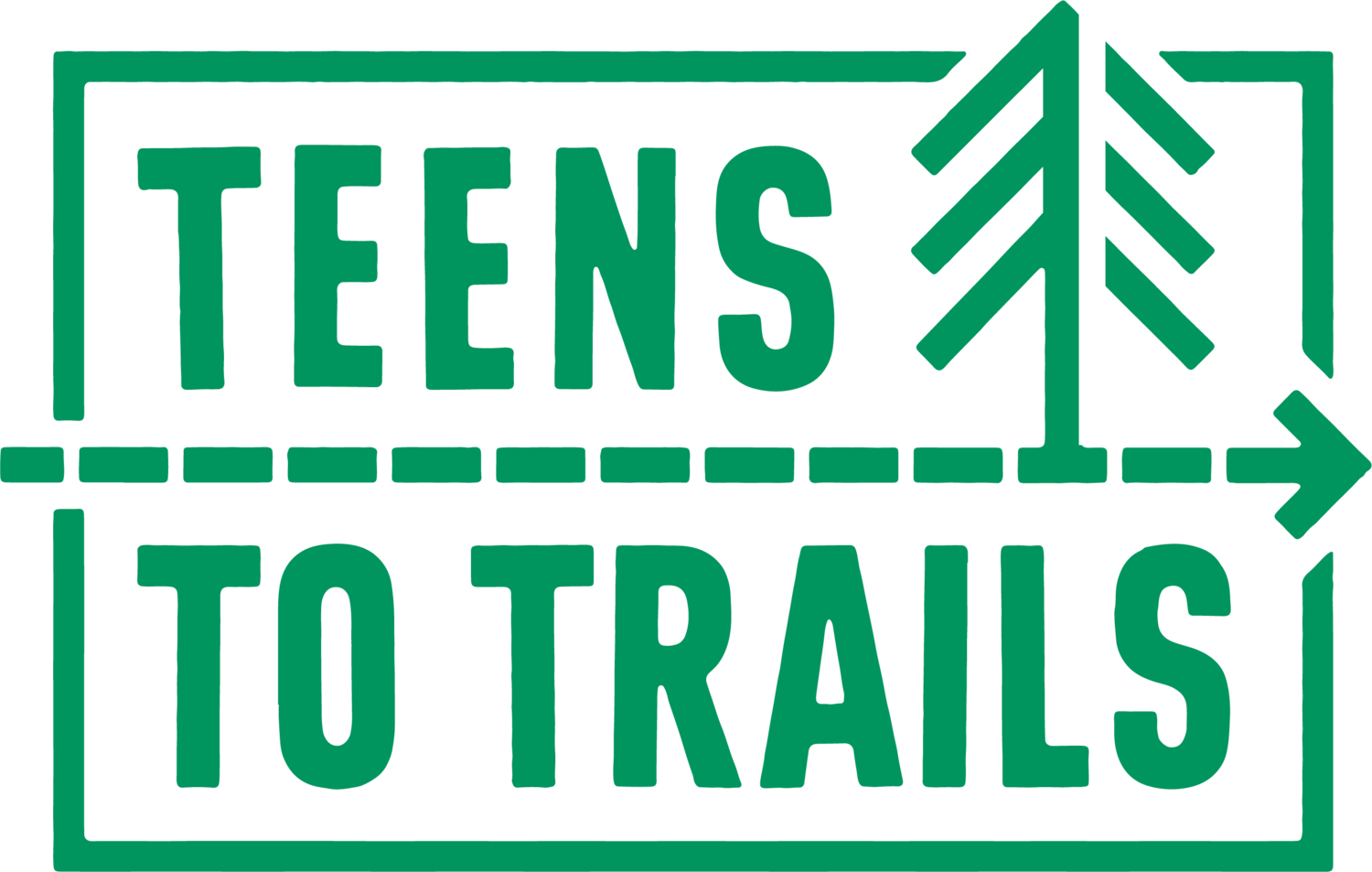Outdoor Explorer’s Club
OUTDOOR EXPLORER’S CLUB
A 6-week program for Middle School students
We put together this 6 week curriculum that is grounded in play and curiosity, offering basic skills with a goal for participants to gain comfort in just being in nature without a significant agenda. It can be hosted by an Outdoor Club, a Recreation Department, Teen Center, home school group or simply a group of friends.
Please feel free to use, share and adapt this for your community. Kids are losing their connection to nature at an accelerated pace, yet the outdoors is a resource for learning, engagement and health and should be available to all students, regardless of race, economic status or experience.
Session length: 90 minutes
Series duration: 6 weeks
Age: Middle School with High School co-leaders
Goal: Play! Keep it loose and somewhat unstructured to respond to the weather, the spaces you have available and the interests of the participants
Teens to Trails helps schools and community organizations incorporate outdoor time into curriculum, and create outing clubs which provide inclusive, non-performance based experiences that break down social barriers and build lifelong habits of wellness.
Teens to Trails received a grant from Community Health Options to help start Outdoor Explorer Clubs throughout Maine in partnership with the Maine Recreation & Parks Association. If you would like Explorers in your community contact https://www.merpa.org and scroll through this slide show.
STEPS TO START AN EXPLORER’S CLUB
Recruit a willing, enthusiastic and somewhat skilled adult PLUS a high school aged co-leader
Consider contacting Teens to Trails for an introduction to your high school outing club, or reach out to your school’s service learning coordinator because students are eager for community service hours, as well as meaningful ways to fill their timeWrite a brief description of the program
Focus on play, exploration, wandering, just feeling comfortable outdoors and in the most natural setting that is convenient to your location (consider holding the program at a local park or land trust property)
Have multiple levels of engagement from the gross to the subtle, such as simply walking on a trail in the woods, to noticing the details of animal prints in the snow.
You can alternate meeting locations if parents are willing.
We suggest 90 minutes, and that you stay outside the whole time.
Prepare a photo release form for parents to sign on the first day
Welcome Circle, introductions, goal setting and expectations
“Hello Explorers!” Reinforce the sense of adventure and curiosity you want them to have.
Develop an easy way to keep take attendance
Gather kids in a circle and have them count off, while recording name:number. Then scramble the circle and have them call out their numbers in sequence. Do this several times each session
Assign weekly Explorer roles
Explore!!
Design projects that can evolve or span several sessions such as building forts, exploring sections of a large property, seeing high tide and low tide at the same spot
Set GPS tracker to record route & distance, kids love seeing their route!
Stay in touch with parents/guardians
It's nice to build engagement and a larger explorer community. Send photos from prior week, links to information about things you did, or animals you saw if the kids want to dig in to more details, include directions to the meeting spot a few days in advance of each meeting
Resources for outdoor winter activities:
The Art of Outdoor Living: A Resource for the Junior Maine Guide Program
Staying Found: The Complete Map & Compass Book
How to Build a Quinzee Snow Shelter
Animal tracking (Printable Pocket Guide from Maine Dept of Inland Fisheries and Wildlife)
Set up a wildlife camera at the start and give the kids the link to watch it between sessions
Sample Explorer Roles for participants:
Attendance
Weather observation & recording
Compass bearing takers
Map holder
Wildlife watchers
Trash picking up
Week 1 - establishing
Icebreaker name game
Overall goals for the session (some of this will be sent ahead to parents)
Talk about layering and dressing for the weather + consequences of cold
Explore the perimeter, nothing too deep in the woods
Identify what natural materials are in abundance
Search for site for building a shelter
Week 2 - creating
Shelter building - be sure to get landowner permission. Do you need to take it down later?
Week 3 - refining
Complete shelter building, leave treats for wildlife like pumpkins, seeds, pinecones
Week 4 - exploring
Sledding
Snowshoe
Spike hike
Week 5 - observing
Wildlife tracking
Week 6 - concluding & celebrating
Return to shelters - who has lived in them while we were gone?
Take down shelters (chance to teach Leave No Trace)
Teach how to safely build a campfire, s’mores, stick bread, cook over fire or bring camping stoves or thermos with premade cocoa



